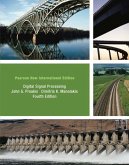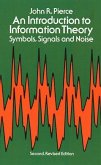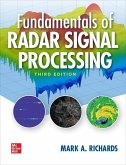Appropriate for courses in Signals and Systems. A market leader in previous editions, this book continues to offer complete, separate treatment survey of continuous and discrete linear systems. It utilizes a systems approach to solving practical engineering problems, rather than using the framework of traditional circuit theory. Numerous examples from circuit theory appear throughout, however, to illustrate the various systems techniques introduced. The Fourth Edition has been thoroughly updated to effectively integrate the use of computers and to accurately reflect the latest theoretical advances.
Features + Benefits
Provides a bridge between the usual circuits courses at the sophomore level and upper division systems courses, including communications, control, and signal processing. Pg.___
Offers instructors the flexibility to incorporate MATLAB as an analysis and design problem-solving aid. Pg.___
Develops a firm foundation in fundamental signal and system theory as well as state-of-the-art topics, such as digital computer simulation of systems. Pg.___
Provides an elementary treatment of digital computer simulation of systems via SIMULINK in addition to the classical treatment of systems in the time domain. (Chapter 2)
Features both traditional examples and MATLAB application examples—as well as end-of-chapter problem sets and computer exercises—in each chapter. Pg.___
Integrates MATLAB throughout the book as an optional computation and visualization tool. Pg.___
Adds the discrete and fast Fourier transform treatments to already thorough coverage of Fourier series and transforms. (Section 4-13)
Accompanies traditional coverage of the Laplace transform and its applications with symbolic computation of the transform via the symbolic math capabilities of MATLAB Student Edition.
Supplements discussion of state variables with MATLAB system simulation via SIMULINK. (Chapter 7)
Supports the analysis and design of digital filters using MATLAB and includes a new section on computer-aided design of digital filters. (Chapters 8 & 9)
Illustrates the FFT and its applications using MATLAB computations. (Chapter 10)
Offers valuable insights and hints for using MATLAB. (Appendix A)
Expands the appendix covering filter design, providing an introduction to analog filter design. Pg.___
1. Signal and System Modeling Concepts.
2 . System Modeling and Analysis in the Time Domain.
3. The Fourier Series.
4. The Fourier Transform and Its Applications.
5. The Laplace Transformation.
6. Applications of the Laplace Transform.
7. State-Variable Techniques.
8. Discrete-Time Signals and Systems.
9. Analysis and Design of Digital Filters.
10. The Discrete Fourier Transform and Fast Fourier Transform Algorithms.
Appendix A: Comments and Hints on Using MATLAB.
Appendix B: Functions of a Complex Variable—Summary of Important Definitions and Theorems.
Appendix C: Matrix Algebra.
Appendix D: Analog Filters.
Appendix E: Mathematical Tables.
Appendix F: Answers to Selected Problems.
Appendix G: Index of MATLAB Functions Used.
Index.
Features + Benefits
Provides a bridge between the usual circuits courses at the sophomore level and upper division systems courses, including communications, control, and signal processing. Pg.___
Offers instructors the flexibility to incorporate MATLAB as an analysis and design problem-solving aid. Pg.___
Develops a firm foundation in fundamental signal and system theory as well as state-of-the-art topics, such as digital computer simulation of systems. Pg.___
Provides an elementary treatment of digital computer simulation of systems via SIMULINK in addition to the classical treatment of systems in the time domain. (Chapter 2)
Features both traditional examples and MATLAB application examples—as well as end-of-chapter problem sets and computer exercises—in each chapter. Pg.___
Integrates MATLAB throughout the book as an optional computation and visualization tool. Pg.___
Adds the discrete and fast Fourier transform treatments to already thorough coverage of Fourier series and transforms. (Section 4-13)
Accompanies traditional coverage of the Laplace transform and its applications with symbolic computation of the transform via the symbolic math capabilities of MATLAB Student Edition.
Supplements discussion of state variables with MATLAB system simulation via SIMULINK. (Chapter 7)
Supports the analysis and design of digital filters using MATLAB and includes a new section on computer-aided design of digital filters. (Chapters 8 & 9)
Illustrates the FFT and its applications using MATLAB computations. (Chapter 10)
Offers valuable insights and hints for using MATLAB. (Appendix A)
Expands the appendix covering filter design, providing an introduction to analog filter design. Pg.___
1. Signal and System Modeling Concepts.
2 . System Modeling and Analysis in the Time Domain.
3. The Fourier Series.
4. The Fourier Transform and Its Applications.
5. The Laplace Transformation.
6. Applications of the Laplace Transform.
7. State-Variable Techniques.
8. Discrete-Time Signals and Systems.
9. Analysis and Design of Digital Filters.
10. The Discrete Fourier Transform and Fast Fourier Transform Algorithms.
Appendix A: Comments and Hints on Using MATLAB.
Appendix B: Functions of a Complex Variable—Summary of Important Definitions and Theorems.
Appendix C: Matrix Algebra.
Appendix D: Analog Filters.
Appendix E: Mathematical Tables.
Appendix F: Answers to Selected Problems.
Appendix G: Index of MATLAB Functions Used.
Index.








